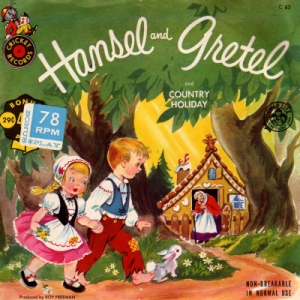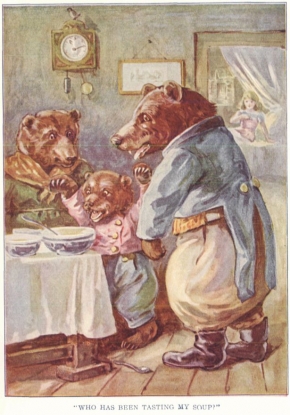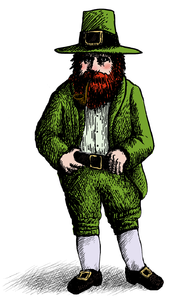Gretel’s Skull Discovered!
September 18, 1995

SCOURING THE PICTURE-BOOK hills and valleys of his beloved Schwarzwald with the same dog-eared copy of Grimm’s Kinder-und-Hausmaerchen that he has caressed since childhood, Professor Fritz “Fritzi” Ulm has at long last stumbled upon his elusive goal. In a simple tomb on the side of a mountain, not half a mile from an abandoned railroad depot and topless juke joint, Ulm discovered the funerary remains of a medieval woman who, experts have concluded, is none other than the celebrated Gretel of Teutonic folklore.

Although buried in the unadorned manner appropriate to a woodcutter’s daughter, Gretel was found hunched beneath an absolutely astonishing heap of treasure and antique foodstuffs. Among the discoveries were two well-preserved panes of sugar-glass from the witch’s edible cottage, a petrified gingerbread rain gutter of singular beauty and a gaily decorated amphora-style vase containing the internal organs of the deceased. Other notable artifacts taken as swag from the witch’s residence included several pails filled with pearls and golden coins and a magnificent little pewter bust of Rumpelstiltskin. There is also said to be a nicely preserved straw broom with a working altimeter.
No trace of brother Hansel was found in or around the tomb. Local legend has him snapping under a lifetime of cruel taunts for being saved by his little sister and fleeing in disgrace to Constantinople, where he fell in among alchemists. When an experiment backfired, Hansel — enjoying a snack of lollipops and icing — was blown sky-high. His mortal remains are generally believed to be circulating in the jet stream, although a horse’s rib fobbed off as his left femur by a youthfully impetuous and financially strapped Ulm made the rounds of the auction houses some years back.
The discovery of Gretel has inspired archaeologists the world over. In England, eminent Cambridge paleologist W.P. Fenton-Slwyygye is considering the startling evidence of a gigantic humanoid skull, fully four feet in diameter, which appears to have sustained a considerable fracture owing to a fall of some thousands of feet, after which the subject was apparently pelted quite badly by several hundred tons of plummeting beanstalk. Further searches in the area have yielded a fossilized cache of curiously large beans. But efforts to rehydrate the somewhat menacing pods have fallen through because of a lack of funds, dashing hopes of starting a new crop of sky-scraping beanstalks that could forever abolish world hunger, or at least provide Fenton-Slwyygye access to the deceased giant’s cloud-locked loot.

And at the University of Kentucky one month ago, paleologists reported discovering the crumbling remains of a cottage deep in the woods of the Black Hills, which they believe to be the actual abode of the three bears of folkloric legend. “There was black bear fur everywhere,” says Donny Glass, a doctoral candidate who oversaw the dig. “It was an incredibly fresh find. Most of the fur was still loaded with parasites. Then we discovered a crudely fashioned chair, which we believed to have been used by Papa Bear, as well as the badly splintered remains of a similar, but much smaller, chair — but it was still too early to say anything. When our intern, Flip, said he’d found an intact strand of blond human hair intermingled with the fur… well, we knew we’d hit pay dirt. The Champagne hasn’t stopped flowing since. Hey, where’s Flip?” And finally, exhaustive analysis of the veritable mountain range of bear scat has at last isolated four bona fide porridge molecules.
As much as they can confirm the veracity of our myths and folktales, some such discoveries are equally apt to jolt us out of our reveries. The badly pulverized condition of Baby Bear’s chair, for example, would indicate the mass of a person who was less the girlish slip of our imaginations than a corpulent, even hulking, lass, probably characterized by an over-fondness for figs and sugared johnnycakes. And the bears’ charming crockery jars, far from containing the brown sugar and oatmeal cookies of our childhood wishes, were evidently filled to overflowing with fat, juicy grubs and other wriggling insect larvae.

But breaches in the wall separating myth from history continue to open up. Two weeks ago, a shepherdess led Scotland Yard detectives to a mummified corpse of what they described as a middle-aged leprechaun near her home. The little man’s greenish skin had been perfectly preserved by the very peat bog into which he had fallen some thousand years ago, no doubt chased by an ogre, banshee, or rogue unicorn. He is said to be wearing a hat of soft green felt topped by a splendid feather, which, in a typical rite of passage among the wee folk, he would have plucked from the downy breast of an invisible bird. He is also said to be wearing a weensy Harley-Davidson belt buckle.
This parallels the findings of an Austrian couple who, when a small mud slide occurred behind their motor home in a suburb of Salzburg, discovered an unusual toadstool-shaped structure containing the diminutive skeletons of several gnomes, whom DNA studies have identified as the infamous “five screwy grandsons of Sneezy.” A portion of Sneezy’s scalp reposes in the Smithsonian, beside Dopey’s kidney and Happy’s exploded sedan chair.
So it continues. As of this writing, University of Bonn scientists are investigating the moldering carcass of a large gray wolf whose ribcage seems, inexplicably, to be filled with stones, as well as the perplexing half-buried remains of a vast shoe containing 20 or so cramped chambers filled with poorly patched children’s clothes, candles, and bed linens. And lastly, NASA spacecraft using infrared technology to map the dark side of the lunar surface have confirmed early reports of a shallow crater bespattered with terrestrial cow flops.
This piece was published in the New York Times Sunday Magazine in 1995
